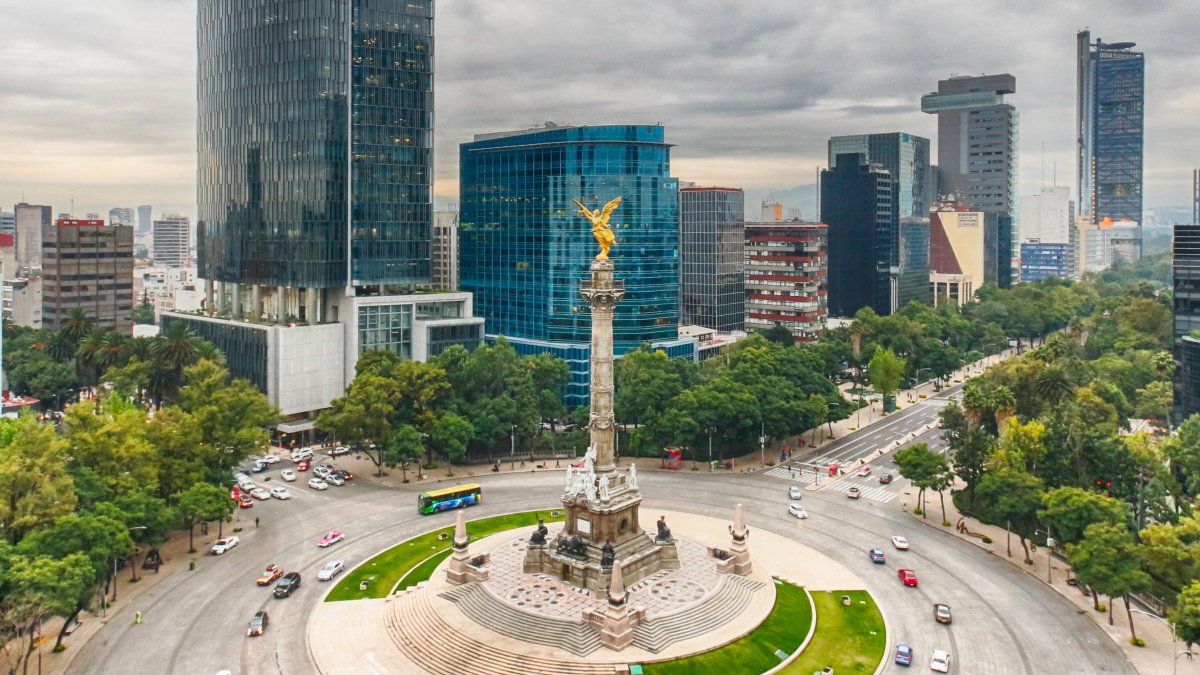Russian intelligence services are increasing their presence in Mexico to conduct espionage operations targeting the United States, marking a return to Cold War tactics by an increasingly aggressive regime, according to U.S. and former intelligence officials. .
Russia has added dozens of troops to its embassy staff in Mexico City in recent years, even though Moscow has only limited commercial ties with the country.
US officials say the trend is worrying and believe the extensive buildup is aimed at bolstering the Kremlin’s intelligence operations targeting the United States, as well as its propaganda efforts aimed at undermining Washington and Ukraine.
The Biden administration has raised the issue with the Mexican government, a US official told NBC News. “Russia has really invested in Mexico in terms of seeking to expand its presence,” the official said.
The Mexican Embassy and the Russian Embassy did not respond to a request for comment.
CIA Director William Burns said earlier this month that his agency and the U.S. government are heavily focused on Russia’s growing presence in Mexico, which he said was partly a result of the expulsion of Russian spies from foreign capitals after Moscow’s large-scale invasion of Ukraine.
Part of this is a function of the fact that so many Russian intelligence officers have been expelled from Europe. So they are looking for places to go and looking for places where they can operate, Burns said in London this month when asked about the alleged Russian espionage from Mexico. But we are very focused on that.
Russia’s actions in Mexico reflect a more aggressive stance by its intelligence services on multiple fronts, as the Kremlin seeks to silence critics abroad, undermine support for Ukraine and weaken Western democracies, former intelligence officials said.
That approach has included sabotage and attempted sabotage in Europe, assassination plots, relentless cyber attacks and large-scale global disinformation campaigns, according to US and European officials.
They are willing to take much greater risks now than they perhaps would have taken immediately after the Cold War, said Paul Kolbe, who worked for 25 years as an operations officer at the CIA, with postings in Russia, the Balkans and elsewhere.
It lasted for years and was led by the superpowers, the United States and the Soviet Union.
Air Force General Glen VanHerck, head of the US Northern Command, told the Senate Armed Services Committee in March 2022 that the Russian GRU military intelligence service had a massive presence in Mexico.
I would like to point out that most of the GRU members in the world are in Mexico at the moment. These are Russian intelligence personnel, and they closely monitor their opportunities to influence U.S. opportunities and access, VanHerck said.
Since VanHerck’s comments, which came shortly after Russia launched its full-scale invasion of Ukraine, Russia has continued to expand its presence at the embassy in Mexico City, gaining accreditation from Mexican authorities.
When asked about the general’s comments at the time, Mexican President Andrés Manuel López Obrador said he had no information on the matter and that Mexico is a free, independent and sovereign country.
RUSSIAN SPIES HAVE A LONG HISTORY IN MEXICO
Although Mexico has developed extensive trade ties with the United States for decades, it has traditionally tried to avoid aligning itself completely with Washington’s foreign policy and has maintained friendly relations with Russia and Cuba.
Russian spies, and their American informants, have a long history in Mexico.
In 1940, the Kremlin persecuted one of its revolutionary leaders and communist ideologues, Leon Trotsky, who had been ousted from power after falling out with Soviet dictator Joseph Stalin.
Trotsky, who at one time was expected to succeed Vladimir Lenin as leader of the Soviet Union, had lived in hiding, moving from country to country before settling in Mexico.
But on August 20, 1940, Trotsky allowed a Spanish communist who he believed to be a friend into his private study.
According to US intelligence officials, the spy balloon used a US Internet company to communicate with China.
The visitor, Ramon Mercader, had hidden a shortened ice-climbing ice ax under his suit jacket, suspended from a rope. He attacked Trotsky, who died of his wounds the next day.
John Sipher, who worked in the CIA’s clandestine service for 28 years, said Russia has always told Americans who offer to spy for Moscow to head to Mexico.
For decades, if Americans volunteered to spy for Moscow, they were told to travel to Mexico City. The environment for Russian intelligence in the United States is difficult, Sipher said.
In the 1970s, Christopher Boyce, a college student working at the TRW aerospace company in the wealthy suburbs of Los Angeles, and his high school friend Andrew Daulton Lee, were convicted of providing secret American satellites to the Soviets.
For two years, Lee traveled to Mexico City to deliver classified information to Soviet embassy agents and raise money for I and Boyce. His case became the subject of a book and a major Hollywood film, The Falcon and the Snowman.
Harold Jim Nicholson, a senior CIA officer convicted in 1997 of passing secrets to Moscow, was serving his sentence for espionage when he tried to use his son to collect his pension payments from Russian agents in Mexico. His son was eventually arrested and convicted in 2010, and his father was convicted a second time.
Two years ago, a prominent Mexican scientist, Hector Cabrera Fuentes, pleaded guilty to having been co-opted by Russian agents to monitor a US government informant living in Miami. Fuentes led a double life with two families on two continents, and Russian spies used that to force him to cooperate.
Unlike the United States, where Russian intelligence is under intense FBI scrutiny and consulates have been closed, Mexico offers a convenient, lower-risk environment for Moscow to supervise agents in the United States and organize other operations, according to former officials. of intelligence.
It’s a very benign environment for the Russians to operate in, said Douglas London, a retired CIA operations officer and author of an autobiography, The Recruiter. It makes a lot of sense, and that’s why the Russians are there in large numbers.
The Russians would probably want to use Mexico’s proximity, but its relative safety is beyond the reach of American security forces to support both American agents and Russian officers operating under deep cover in the United States, he said.
A U.S. agent working for Russian intelligence could travel back and forth across the U.S.-Mexico border and meet with Russian controllers to receive payment, be interrogated, resupplied, and receive training in communication methods or other techniques. of espionage, London and other former CIA officers said.
Russian intelligence could also take advantage of Mexico’s proximity to target Putin’s political enemies within the United States, former intelligence officials said.
The Russians would probably have little interest in agents trying to cross the southern border illegally with migrants, London said. They want any trip to be transparent, to appear clean, to go unnoticed, he said.
But Russian intelligence agencies would have the option of working with cross-border criminal networks if it made sense for a particular mission, and if they were willing to tolerate much greater risk, according to other former intelligence officials.
Part of the GRU’s mandate is to prepare possible sabotage operations in the event of a war with the US, and Mexico would be a practical base for such contingency plans, former intelligence officials said.
The perception of a large Russian espionage bastion in Mexico is also useful as a propaganda tool, to exaggerate Moscow’s capabilities and fuel the perception of a supposedly uncontrollable border, Kolbe said.
U.S. officials are also concerned about Russia’s effort to manipulate the news landscape in Mexico, seeking not only to undermine international support for Ukraine but also to sow social divisions.
Russia has expanded its state-funded media outlet RT in Mexico and has run a major advertising campaign for the channel.
In April, the Russian ambassador to Mexico published a false report by Russian state media alleging that the United States was recruiting members of the Mexican and Colombian drug cartels to send them to fight in Ukraine. The unsubstantiated version was picked up by some Mexican news organizations.
This article was originally published in English on NBC News. click here to read it.

